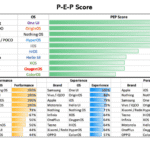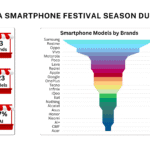The world of AI is heating up, and agents are taking center stage as the vehicles through which the world experiences the power of AI. But for businesses to truly benefit from key AI offerings today, it’s important to clearly understand two terms that are often confused: AI Agents and Agentic AI.
AI Agents are smart bots or automated systems that carry out specific, pre-defined tasks. Chatbots answering customer queries or bots handling stock trades are popular examples of AI Agents. These agents are built to work within fixed rules and don’t usually go beyond them. They may show small variations in output, but they stick to the framework they’re given. This makes them dependable for repetitive or structured tasks, helping businesses save time and effort.
Agentic AI, on the other hand, is much broader and more powerful. It is a framework of deep-trained AI systems comprising predictive and generative capabilities. It works in harmony and does not just follow rules – it shows true “agency” by combining prediction, reasoning, and generative abilities. That means it can understand context, plan, execute multiple steps, and improve itself with minimal human guidance. It thrives in complex, changing environments where flexibility and intelligence matter more than rigid rules.
Let’s understand them through a few lenses:
AI Brain and Muscle:
Agentic AI is like the brain and command center, while AI Agents are the hands and tools delivering business actions. Agentic AI designs the systems, coordinates agents, and keeps improving over time. Businesses can use AI Agents for quick automation, but to drive long-term transformation and handle large, complex goals, Agentic AI provides the necessary intelligence, context, and structure.
Autonomy:
AI Agents work within strict limits and need monitoring, but they can still deliver tasks at enterprise scale. Agentic AI, however, can learn from data, predict what might happen next, and generate a logical flow of steps that might help build processes. But it can go even further by designing frameworks that allow different systems to work together while getting smarter.
Adaptability:
AI Agents, on one hand, are best for predictable, rule-based tasks. They cannot adapt beyond their design. By contrast, Agentic AI can think on its feet and adjust strategies when situations change, reducing the need for constant human involvement. When it encounters something it cannot handle, it pauses and alerts people to intervene instead of guessing or hallucinating outcomes.
With a clearer understanding of Agentic AI and AI Agents, business leaders must also weigh the risks that come with the shift towards Agentic AI. Specifically, they must know standards to safeguard business and customer data, prevent misinformation generation, and stop business-sensitive information from being shared without authorization. Responsible use calls for strong oversight, regulatory measures, and human involvement to ensure safety.
Ultimately, the choice between AI Agents and Agentic AI should match your organization’s goals, complexity of processes or use cases, and readiness for independence. For routine, defined work, well-tuned AI Agents provide quick and reliable benefits. However, if your goals are evolving, vary in complexity, or involve multiple actions, Agentic AI offers a strong option—as long as you implement it with solid safeguards and careful planning.

-Tapan Barman, Co-founder and CEO, Mihup
About Tapan Barman: Tapan Barman is the Co-Founder and CEO of Mihup, a leading conversation intelligence platform established in 2016. With over 16 years of experience, Tapan has built a reputation as a visionary entrepreneur, driving innovation at the intersection of technology and business. Under his leadership,
Mihup has grown into a trusted platform that leverages artificial intelligence to enable seamless communication, ensuring technology is inclusive and accessible, regardless of language, accent, or dialect.





